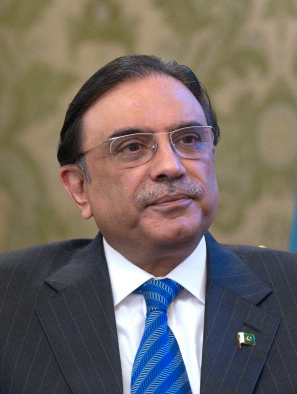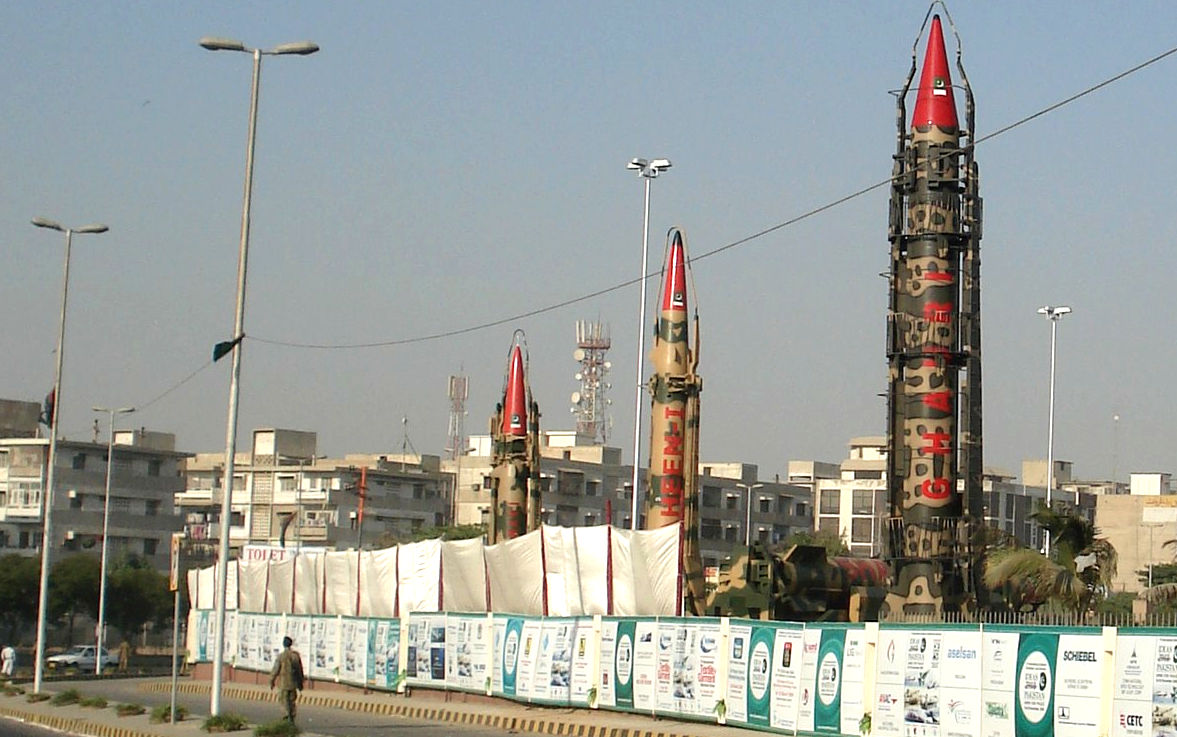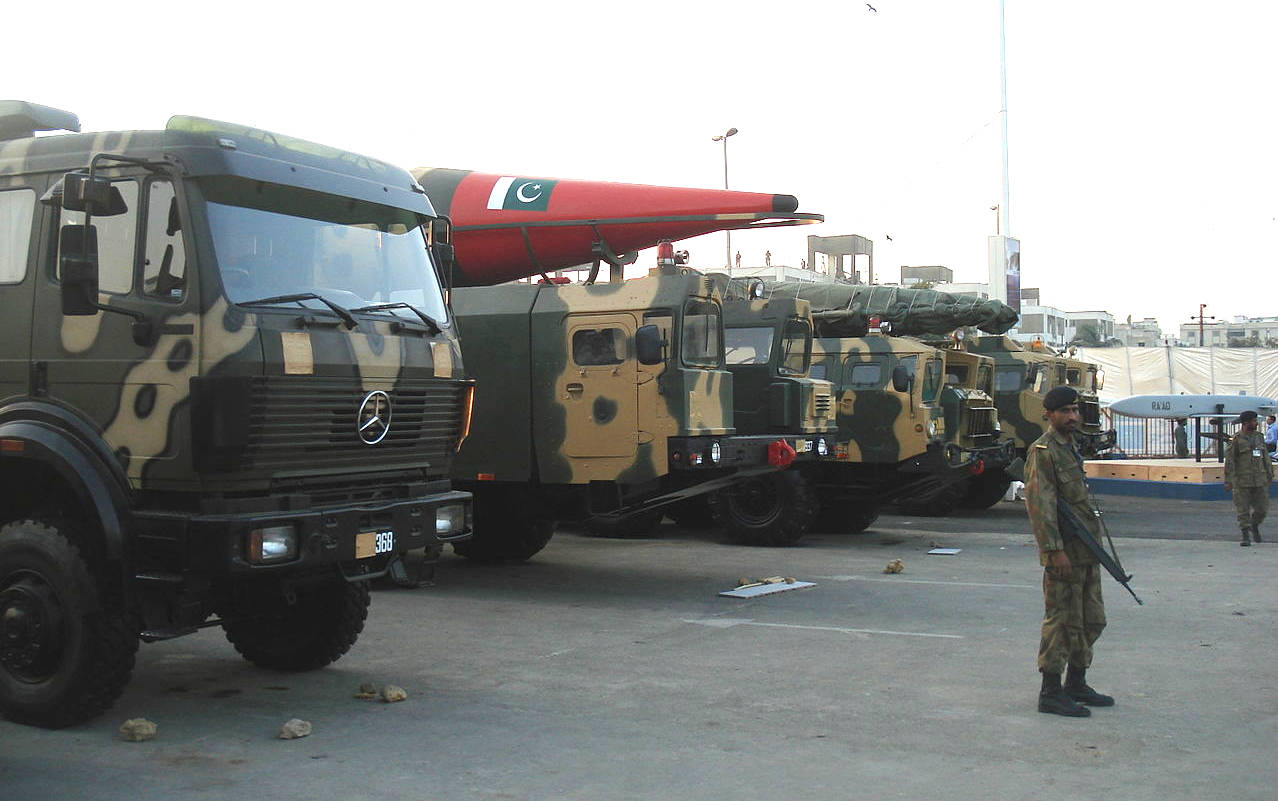|

Commander John
Storm just wants to be left alone to complete his DNA collection, and
explore the uncharted regions on planet
earth. But he always seems to be
in the wrong place at the wrong time.
The
Pakistani Prime Minister, Asif Ali
Zardari, is taken hostage as part of the plan
of the extreme activists to destroy all life on planet
earth, to enable them to stage a Phoenix like comeback from the ashes,
and takeover from the leaders they see as weak.
Red
Dragon's plan, 'Operation Grand Slam: Phoenix,' will destroy all civilization,
history and heritage from thousands of years of human endeavor. But they
don't care about that. They just want to rule the world, and to rewrite
history they way they want to see it written. Their plan is write themselves
in as the saviors of the world.
Working
with other like minded cells, the extremists kidnap Asif Ali Zardari and
other world leaders with nuclear capability. Holding them hostage, until
their evil plan comes to fruition. After which their fate will be decided.
The
fact Pakistan
possesses nuclear weapons, sealed the fate of their leader, being selected
as the head of a potential threat.

Pakistan is one of nine states that possess nuclear weapons. Pakistan began developing nuclear weapons in January 1972 under Prime Minister Zulfikar Ali Bhutto, who delegated the program to the Chairman of the Pakistan Atomic Energy Commission (PAEC) Munir Ahmad Khan with a commitment to having the device ready by the end of 1976. Since PAEC, which consisted of over twenty laboratories and projects under reactor physicist Munir Ahmad Khan, was falling behind schedule and having considerable difficulty producing fissile material, Abdul Qadeer Khan, a metallurgist working on centrifuge enrichment for Urenco, joined the program at the behest of the Bhutto administration by the end of 1974. Producing fissile material was pivotal to the Kahuta Project's success and thus to Pakistan obtaining the capability to detonate a nuclear weapon by the end of 1984.
After the Partition of India in 1947, India and Pakistan have been in conflict over several issues, including the disputed territory of Jammu and Kashmir. The uneasy relationships with India,
Afghanistan, and the former Soviet Union explain its motivation to become a nuclear power as part of its defence and energy strategies.
The Bangladesh Liberation War was a defeat for Pakistan, which led to it losing roughly 56,000 square miles (150,000 km2) of territory as well as losing more than half its population to the newly independent state of Bangladesh. In addition to the psychological setback for Pakistan, it had failed to gather any significant material support or assistance from its key allies, the United States and the People's Republic of
China. Pakistan seemed to be isolated internationally, and in great danger; it felt that it could rely on no one but itself. Prime Minister Zulfiqar Ali Bhutto was "obsessed" with India's nuclear program. At a
United Nations Security Council meeting, Bhutto drew comparisons between the Instrument of Surrender that ended the 1971 war, and the Treaty of Versailles, which
Germany was forced to sign in 1919. There, Bhutto vowed never to allow a repeat.
Pakistan is not a party to the Non-Proliferation Treaty (NPT) and is not bound by any of its provisions. In 1999, Prime Ministers Nawaz Sharif of Pakistan and Atal Bihari Vajpayee of India signed the Lahore Declaration, agreeing to a bilateral moratorium on further nuclear testing. This initiative was taken a year after both countries had publicly tested nuclear weapons. (See Pokhran-II, Chagai-I and II)
Since the early 1980s, Pakistan's nuclear proliferation activities have not been without controversy. However, since the arrest of Abdul Qadeer Khan, the government has taken concrete steps to ensure that Nuclear proliferation is not repeated and have assured the IAEA about the transparency of Pakistan's upcoming Chashma Nuclear Power Plant. In November 2006, The International Atomic Energy Agency Board of Governors approved an agreement with the Pakistan Atomic
Energy Commission to apply safeguards to new nuclear power plants to be built in the country with Chinese assistance.
In late 2006, the Institute for Science and International Security released intelligence reports and imagery showing the construction of a new plutonium reactor at the Khushab nuclear site. The reactor is deemed to be large enough to produce enough plutonium to facilitate the creation of as many as "40 to 50 nuclear weapons a year." The
New York Times carried the story with the insight that this would be Pakistan's third plutonium reactor, signalling a shift to dual-stream development, with Plutonium-based devices supplementing the nation's existing HEU stream to atomic warheads. On 30 May 1998, Pakistan proved its plutonium capability in a scientific experiment and sixth nuclear test: codename Chagai-II.
Estimates of Pakistan's stockpile of nuclear warheads vary. The most recent analysis, published in the Bulletin of the Atomic Scientists in 2010, estimates that Pakistan has 7090 nuclear warheads. In 2001, the US-based Natural Resources Defense Council (NRDC) estimated that Pakistan had built
24 - 48 HEU-based nuclear warheads with HEU reserves for 3052 additional warheads. In 2003, the
US Navy Center for Contemporary Conflict estimated that Pakistan possessed between 35 and 95 nuclear warheads, with a median of 60. In 2003, the Carnegie Endowment for International Peace estimated a stockpile of approximately 50 weapons. By contrast, in 2000, US military and intelligence sources estimated that Pakistan's nuclear arsenal may be as large as 100 warheads. In 2018, the Federation of American Scientists estimated that the arsenal was about 120-130 warheads.
SECOND STRIKE CAPABILITY
According to a US congressional report, Pakistan has addressed issues of survivability in a possible nuclear conflict through second strike capability. Pakistan has been dealing with efforts to develop new weapons and at the same time, have a strategy for surviving a nuclear war. Pakistan has built hard and deeply buried storage and launch facilities to retain a second strike capability in a nuclear war. In January 2000, two years past after the atomic tests, US intelligence officials stated that previous intelligence estimates "overstated the capabilities of India's homegrown arsenal and understate those of Pakistan". The United States Central Command commander, General Anthony Zinni told the NBC that longtime assumptions, that "India had an edge in the South Asian strategic balance of power, were questionable at best. Don't assume that Pakistan's nuclear capability is inferior to the Indians", General Zinni quoted to NBC.
It was confirmed that Pakistan has built Soviet-style road-mobile missiles, state-of-the-art air defences around strategic sites, and other concealment measures. In 1998, Pakistan had 'at least six secret locations' and since then it is believed Pakistan may have many more such secret sites. In 2008, the United States admitted that it did not know where all of Pakistan's nuclear sites are located. Pakistani defence officials have continued to rebuff and deflect American requests for more details about the location and security of the country's nuclear sites.
In 2010, Russian foreign ministry official Yuriy Korolev stated that there are somewhere between 120,000 and 130,000 people directly involved in Pakistan's nuclear and missile programs, a figure considered extremely large for a developing country.
US ASSISTANCE
From the end of 2001 the United States has provided material assistance to aid Pakistan in guarding its nuclear material, warheads and laboratories. The cost of the program has been almost $100 million. Specifically the United States has provided helicopters, night-vision goggles and nuclear detection equipment. In addition, the US has funded the creation of a nuclear security training center, fencing, intrusion detectors, and identification systems.
During this period Pakistan also began to develop a modern export control regulatory regime with US assistance. It supplements the US National Nuclear Security Administration Megaports program at Port Qasim, Karachi, which deployed radiation monitors and imaging equipment monitored by a Pakistani central alarm station.

DELIVERY SYSTEMS
Land
As of 2011, Pakistan possesses a wide variety of nuclear-capable medium range ballistic missiles with ranges up to 2750 km.[186] Pakistan also possesses nuclear-tipped Babur cruise missiles with ranges up to 700 km. In April 2012, Pakistan launched a Hatf-4 Shaheen-1A, said to be capable of carrying a nuclear warhead designed to evade missile-defense systems. These land-based missiles are controlled by Army Strategic Forces Command of Pakistan Army.
Pakistan is also believed to be developing tactical nuclear weapons for use on the battlefield with ranges up to 60 km such as the Nasr missile. According to Jeffrey Lewis, director of the East Asia Non-proliferation Program at the Monterey Institute of International Studies, citing a Pakistani news
article, Pakistan is developing its own equivalent to the Davy Crockett launcher with a miniaturised warhead that may be similar to the W54.
Air
The Pakistan Air Force (PAF) is believed to have practiced "toss-bombing" in the 1980s and 1990s, a method of launching weapons from fighter-bombers which can also be used to deliver nuclear warheads. The PAF has two dedicated units (No. 16 Black Panthers and No. 26 Black Spiders) operating 27 aircraft in each squadron (78 aircraft total) of the JF-17 Thunder, believed to be the preferred vehicle for delivery of nuclear
weapons. These units are major part of the Air Force Strategic Command, a command responsible for nuclear response. The PAF also operates a fleet of F-16 fighters, of which 18 were delivered in 2012 and confirmed by General Ashfaq Parvez Kayani, are capable of carrying nuclear weapons. With a third squadron being raised, this would bring the total number of dedicated nuclear capable aircraft to a total of 75. The PAF also possesses the Ra'ad air-launched cruise missile which has a range of 350 km and can carry a nuclear warhead with a yield of between 10kt and 35kt.
A 2016 report by Hans M. Kristensen stated that "The F-16s were considered to be the first planes that are nuclear-capable in the Pakistan arsenal and the French Mirage III was upgraded as well to carry a new air launch cruise missile. But the United States made its case. What Pakistan does once they get the planes is inevitably up to them," he said. The report also stated that Pakistan is obliged under the terms of its contract to ask the US for permission before the fighters are converted. To date, the US has given only two countries (Pakistan and
Israel) implicit permission to modify their F-16s to carry nuclear warheads.
It has also been reported that an air-launched cruise missile (ALCM) with a range of 350 km has been developed by Pakistan, designated Hatf 8 and named Ra'ad ALCM, which may theoretically be armed with a nuclear warhead. It was reported to have been test-fired by a Mirage III fighter and, according to one Western official, is believed to be capable of penetrating some air defence/missile defence systems.
Sea
The Pakistan Navy was first publicly reported to be considering deployment of nuclear weapons on submarines in February 2001. Later in 2003 it was stated by Admiral Shahid Karimullah, then Chief of Naval Staff, that there were no plans for deploying nuclear weapons on submarines but if "forced to" they would be. In 2004, Pakistan Navy established the Naval Strategic Forces Command and made it responsible for countering and battling naval-based weapons of mass destruction. It is believed by most experts that Pakistan is developing a
sea-based variant of the Hatf VII Babur, which is a nuclear-capable ground-launched cruise missile.
On 9 January 2017, Pakistan conducted a successful launch of the Babur III missile from an underwater mobile platform. The Babur-III has a range of 450 km and can be used as a second-strike capability. It has been speculated that the missile is ultimately designed to be incorporated with the Agosta 90B class submarine which has been reported to have been modified. However no such tests have been carried out yet. On 29 March 2018, Pakistan reported that the missile had again been successfully tested.
With a stockpile of plutonium, Pakistan would be able to produce a variety of miniature nuclear warheads which would allow it to nuclear-tip the C-802 and C-803 anti-ship missiles as well as being able to develop nuclear torpedoes, nuclear depth bombs and nuclear naval mines.
Nuclear submarine
In response to INS Arihant, India's first nuclear
submarine, the Pakistan Navy pushed forward a proposal to build its own nuclear submarine as a direct response to the Indian nuclear submarine
program. Many military experts believe that Pakistan has the capability of building a nuclear submarine and is ready to build such a fleet. In February 2012, the Navy announced it would start work on the construction of a nuclear
submarine to better meet the Indian Navy's nuclear threat. According to the Navy, the nuclear submarine is an ambitious project, and will be designed and built indigenously. However, the Navy stressed that "the project completion and trials would take anywhere from between 5 to 8 years to build the nuclear submarine after which Pakistan would join the list of countries that has a nuclear submarine."

CYBER WW3III
CAST:
|
CHARACTERS:
PROTAGONISTS
|
DESCRIPTION
|
|
|
|
|
Admiral
Lawrence Francis Percival
|
First
Sealord, British
Royal Navy
|
|
Antonio
Guterres
|
United
Nations' Secretary General
|
|
Ark,
The
|
The
world's most comprehensive interactive DNA database
|
|
Benjamin
Reid Blakestone RN
|
Submariner
Commander HMS Neptune (Captain)
|
|
BioCore
|
A
digital communication interface for the human brain
|
|
Captain
Nemo AI
|
AI
autonomous navigation system, COLREGs
compliant
autopilot
|
|
Charley
Temple
|
Researcher
& camerwoman,
good friend of John Storm
|
|
Cleopatra
Philopator VII Reborn
|
Trish
Lippard is Cleopatra's
call sign to protect her royal identity
|
|
CyberCore
Genetica
|
The
world's smallest, fastest & most powerful supercomputer
|
|
Daniel
(Dan) Hawk
|
Electronics
& computers, champion
gamer, member
Elizabeth Swann crew
|
|
Dr
Roberta Treadstone
|
Blue
Shield, Newcastle University, England
|
|
Elizabeth
Swann HMHS
British Royal Navy
|
World's
fastest
solar/hydrogen ship & floating laboratory
|
|
Excalibur,
Pendragon & Merlin
|
Anti
piracy weapon & ship security system
|
|
George
Franks
|
Legal
and intelligence trust manager, Swindles
& Gentry
|
|
HAL
AI
|
The
onboard AI
supercomputer ship manager
|
|
Jack
Mason
|
CIA
secret agent who covets the CyberCore Genetica & John's strength
|
|
Jens
Stoltenberg
|
Secretary
General of NATO (North
Atlantic Treaty Organization)
|
|
Jill
Bird
|
Senior
BBC news
correspondent & world service anchor
|
|
John
Storm
|
Ocean
adventurer, marine archaeologist, Commander
RN
|
|
King
Charles III
|
British
Monarch in waiting: King William, Prince of Wales
|
|
King
William V
|
British
royal rushed into hiding with Queen Catherine
|
|
Nautilus
|
Elizabeth
Swann's onboard survey ROV
|
|
Professor
Douglas Storm
|
John
Storm's uncle, designer
of Elizabeth Swann
|
|
Professor
Jacques Pierre Daccord
|
UNESCO sunken
realms division, conservationist
|
|
Queen
Catherine
|
Royal
consort to King William V - Charlotte, George & Louis
|
|
Richard
Leon (Lionheart) Engelheart
|
Lieutenant,
a brave
submariner HMS Neptune
|
|
SSN
Neptune
|
Stricken
Astute nuclear sub with Spearfish torpedoes
|
|
Steve
Green
|
Freelance
reporter, friend of Charley Temple
|
|
Suki
Hall
|
A
marine biologist, admirer of John's work
|
|
Tom
Hudson
|
Sky
News Editor, always looking for an exclusive
|
|
William
Liam Wallace
|
Scottish
director BAE Systems, MOD contractor, whistleblower
|
|
CHARACTERS:
ANTAGONISTS
|
DESCRIPTION
|
|
|
|
|
Ali Khamenei
|
Iranian Grand Ayatollah
|
|
Asif
Ali Zardari
|
Prime
Minister of Pakistan
|
|
Chuck
Kowalski
|
Midnight
Sun - military
Triad Cell lead (Americas)
|
|
Donald
Trump
|
Former
45th
President of the United States of America
|
|
Emmanuel Macron
|
French
President
|
|
General
Reza Shar
|
Red
Dragon triad mastermind, of Operation Grand Slam
|
|
George
W Bush
|
43rd
US President, war on terror, invaded
Iraq on fabricated reports
|
|
Giovanni
Romano
|
Golden
Cage - military
Triad Cell lead (Europe)
|
|
Golden
Cage (Giovanni Romano)
|
Military
Triad Cell covering Europe, French, German & UK targets
|
|
Joe Biden
|
President
USA (46th)
|
|
Harry
(Dirty) Hallem Holland
|
Chief
Constable - Scotland Yard (Metropolitan Police)
|
|
Kamala
Harris
|
47th
President of the United States, Democrat candidate
|
|
Katya
Volkov
|
Russian
intelligence FSB double agent, would be defector
|
|
Keir Starmer
|
British
Prime Minister
|
|
Kim Jong Un
|
Supreme leader North Korea
|
|
Marine
Le Pen
|
French
Prime Minister
|
|
Midnight
Sun (Chuck Kowalski)
|
Military
Triad Cell covering American and Canadian targets
|
|
Narendra Modi
|
Prime
Minister of India
|
|
Nadia Petrova
|
Former
KGB agent helping Katya and John anonymously
|
|
Nick
(The Devil) Johnson MP
|
Corrupt
UK
Minister for Defence, oil investor
|
|
Olaf Scholz
|
German
Chancellor
|
|
Red
Dragon (Reza Shar)
|
Military
Triad Cell covering Africa, Asia, Iran, Russia & N Korean
CRINKs
|
|
Saddam
Hussein
|
Iraqi
proponent of a united Arabia, executed for HR
crimes & cheap oil
|
|
Sir
Rodney Vernon Dunbar
|
MI6
military intelligence (General)
oil investor
|
|
Tim
Waltz (Top
Gun)
|
Governor
of Minnesota,
(Top
Gun) running mate with Kamala Harris
|
|
Tony Blair
|
Former
British PM, invaded Iraq on false intelligence
|
|
Vladimir Putin
|
Russian
President
|
|
Xi Jinping
|
President
People's Republic of China
|
|


